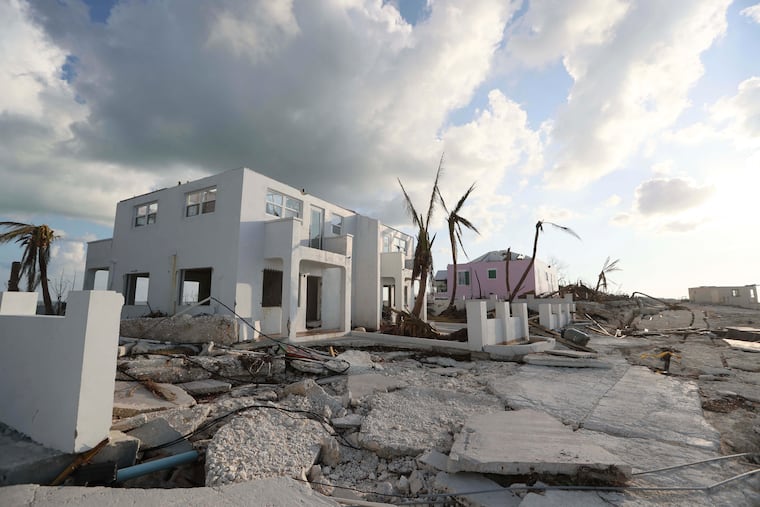Post-Dorian evacuations continue in Bahamas. Why didn’t more people leave before the storm?
One explanation for why so many stayed on the islands as Dorian arrived was the Bahamian culture of "riding out" storms, said one expert.

Mammoth efforts to evacuate Hurricane Dorian victims from devastated Bahama islands continue. So, why didn’t more Bahamians evacuate before the storm arrived?
Bahamians “are really upset with the government for not having an emergency plan,” Amelia Moore, a Rhode Island University professor who specializes in Bahamian affairs, said Monday.
“They think a lot of people died unnecessarily.”
But one explanation for why so many people stayed on the islands even as Dorian warnings became more menacing transcends public policy and the limits of hurricane predictability.
Bahamians are “used to riding out storms," Moore said. “They’re culturally bound to ride out storms,” she added, and the government did not issue a mandatory evacuation order.
Unfortunately, they never have experienced a storm of quite this magnitude, even though the Bahamas have been frequent targets of powerful hurricanes.
The peak winds when the storm made landfall at Great Abaco Island at 2 p.m. Sunday, Sept. 1, were 185 mph — the equivalent of an EF-4 “violent" tornado. It was the strongest storm ever to hit the islands, according to the National Hurricane Center.
It was tied with the historic 1935 Florida Keys’ Labor Day Hurricane for the strongest storm on record to make landfall in the Atlantic Basin, said the hurricane center’s Dennis Feltgen.
The Bahamian government issued a hurricane watch at 5 a.m. Friday, Aug. 30. Twelve hours later, it became a warning, as the official hurricane center forecast called for peak winds of 140 mph.
Those wind projections were upgraded with subsequent advisories, up to 155 mph at 11 p.m. that Saturday, but the actual winds had strengthened even more as it approached Abaco.
“By the time people realized it was category 5, it was too late to do anything about it,” said Moore. What’s worse, as it battered the Bahamas, Dorian’s movement slowed to a ponderous 5 mph.
Hurricanes are relatively small in geographic coverage, compared with cool-season storms. Nassau, the nation’s capital, didn’t suffer nearly the damages, Moore noted, as Dorian made a direct hit about 90 miles north.
As devastating as the storm was, the aftermath might be worse, Moore said.
“You’re really going to see a powder keg in the weeks and months to come,” said Moore, who had visited the Bahamas in August, and coincidentally left on the 23rd, the day before the hurricane center issued its first Dorian advisory.
The islands have endured “chronic blackouts,” she said, before Dorian was a rumor. Disease outbreaks are a threat to those who have been left behind.
And it is not at all clear just where all evacuees are going to find safe refuge.
And according to reports, evacuees aboard a ferry bound for Florida were told they had to disembark if they didn’t have valid visas. Hundreds more have sought refuge in Nassau.
The islands’ inhabitants include some of the world’s wealthiest, but also some of its poorer, including undocumented Haitian migrants.
“Recovery tends to favor the privileged,” Moore said.
For those interested in contributing to the relief efforts, here is a gofundme link.